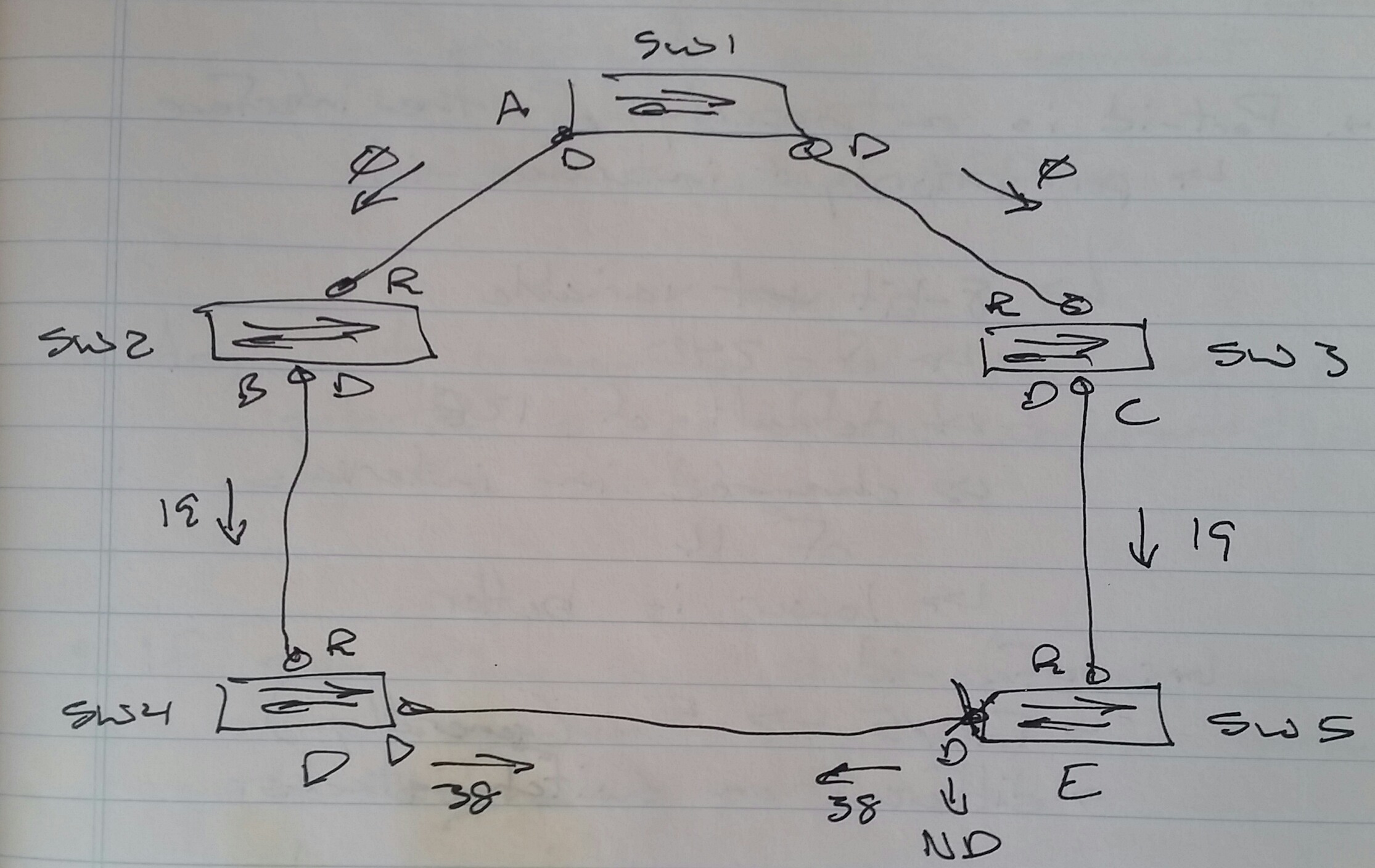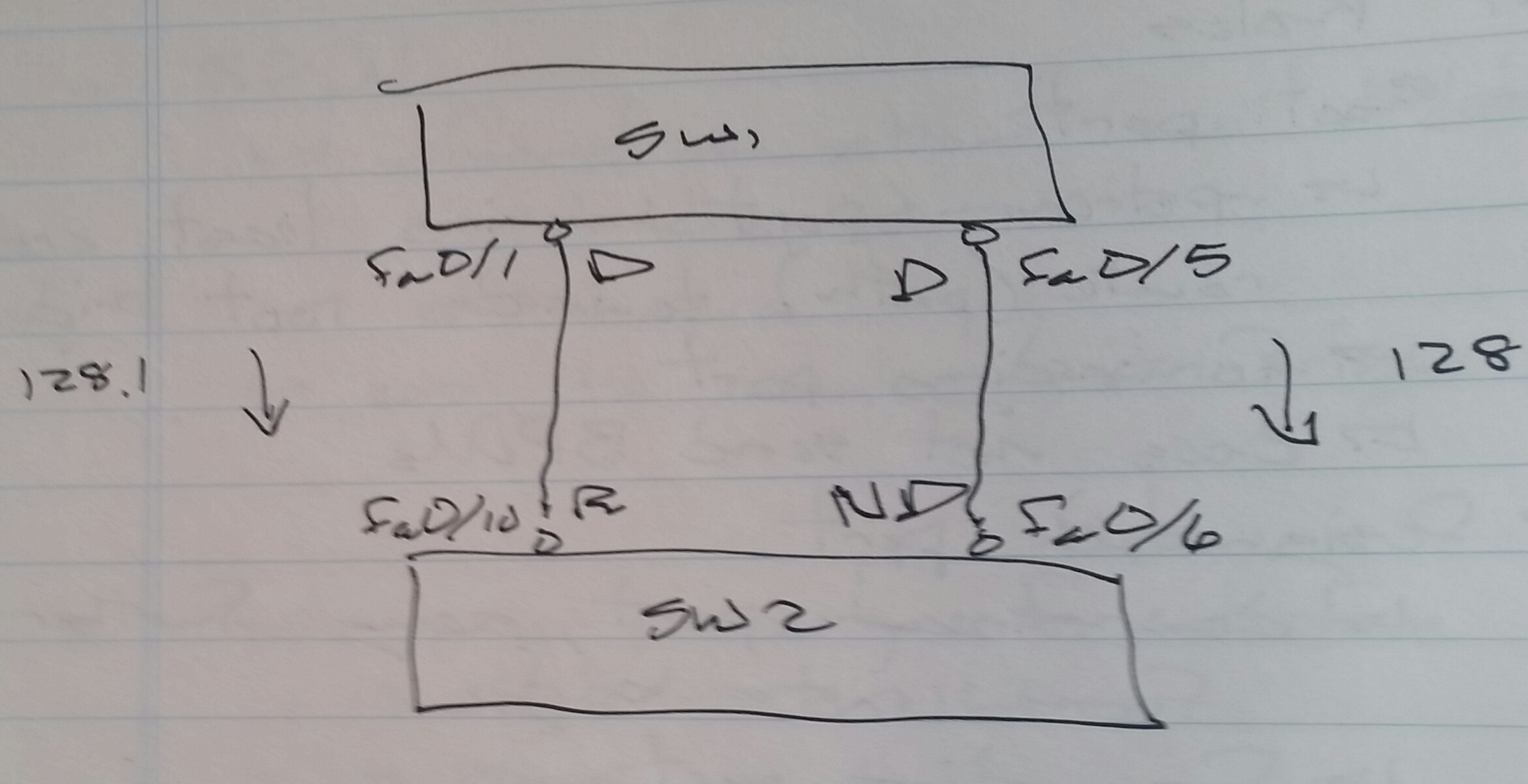Spanning Tree Protocol (STP) Notes
Spanning Tree Protocol (STP)
– 802.1D
– Used to prevent loops while maintaining redundancy

1. Reference Point
– Root Bridge
-> Priority
-> Lower is better
-> Base MAC address
-> Lower is better
– Priority
-> 0 – 61440
-> Default is 32768
2. Hello messages sent every 2 seconds to other switches
– Bridge Protocol Data Unit (BPDU)
-> Information about the root bridge
-> Bridge-ID
-> Timers
-> Cost to reach the root bridge
3. Cost is a property of the interface
– 10 Mbps
-> 100
– 100 Mbps
-> 19
– 1 Gbps
-> 4
– 10 Gbps
-> 2
4. Port-id is a property of the interface
– Port-priority + Interface-id
– Port-priority
-> 8 bit variable
-> 0 – 240
-> Default is 128
-> Changed in intervals of 16
-> Lower is better
– Interface-id
-> fa0/5 == 5 (generally…)
-> Different on switch stacks
5. Cost is incremented on every incoming port
6. By default, the root bridge sends BPDU cost of 0
7. Port Roles
– Root port
-> Upstream port having least cost route (path) towards the root bridge
-> Forwarding port
-> Does not send BPDUs
– Designated port
-> Downstream port, going further away from the root bridge
-> Forwarding port
-> Sends BDPUs
– Non-Designated port
-> Downstream port, but least desirable on a network segment
-> Blocking port
-> Still processes BPDUs
8. Any port remaining after root port is selected is considered designated port by the switch
9. If more than one designated port is on the same segment, only one can remain the designated port
– Decided by STP Conflict Resolution Procedure (CRP)
1. Root Bridge ID
2. Least cost towards root bridge
3. Sender Bridge-ID is compared with local Bridge-ID
4. Sender’s Port-ID is compared
-> Used when multiple ports are connected to the same switch

STP Reconvergence (1st Scenario)
– Direct link failure
1. Listening state
-> 15 seconds (forwarding delay)
2. Learning state
-> 15 seconds (forwarding delay)
3. Forwarding state
-> After 30 seconds
STP Reconvergence (2nd Scenario)
– Indirect link failure
– Link between SW1 & SW3 goes down
-> SW3 sends BPDUs to SW5 claiming to be the root bridge
1. MAX AGE time
-> 20 seconds
2. Listening state
-> 15 seconds (forwarding delay)
3. Learning state
-> 15 seconds (forwarding delay)
4. Forwarding state
-> After 50 seconds

